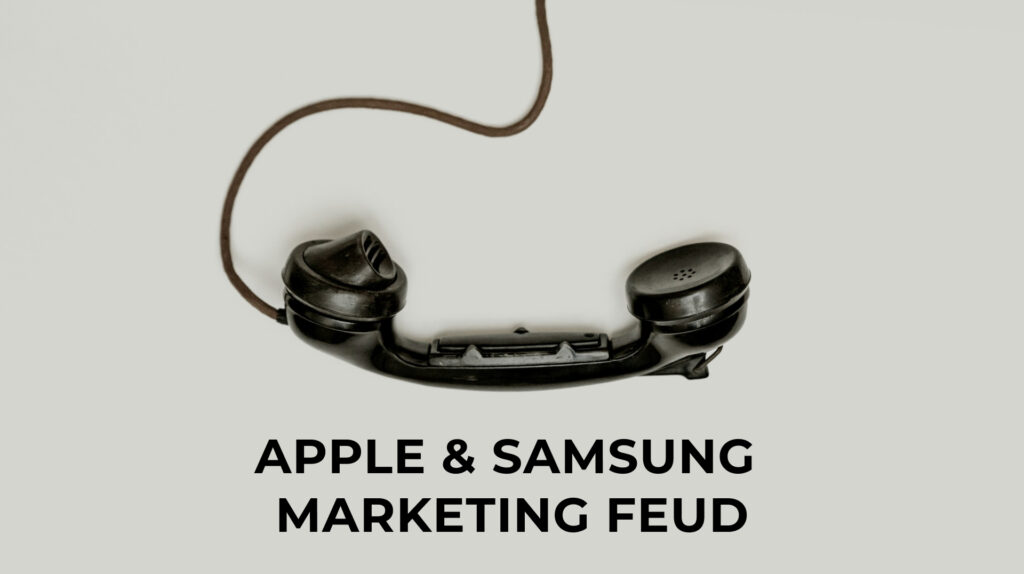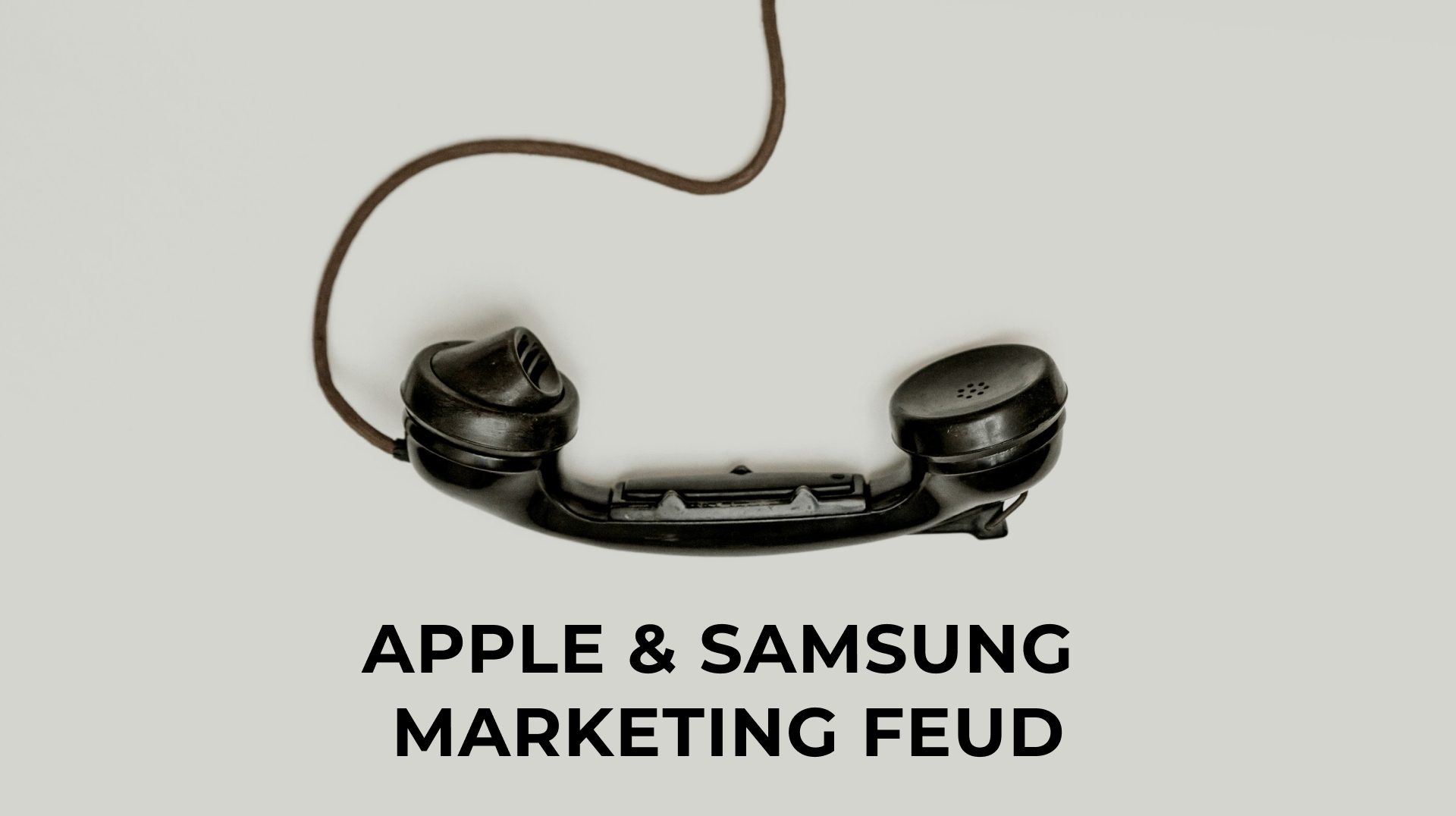A month ago, Apple introduced new software layouts, and since there have been many leaks about the iPhone’s new design. At the same time, an old argument has arisen from the ashes. Hundreds of thousands of memes, videos, and TikTok posts have appeared discussing who is now better, Apple or Samsung. And I bet you have seen it more than once or twice this month. Maybe you even contributed to this heated quarrel because I definitely have. I also bet you are getting a strange feeling of deja vu… Has this already happened? And why do I feel so strongly about phone companies?
Well, answering the first question is a piece of cake: yes, it did. And it happens at least once a year after Apple or Samsung holds a release press conference, talking all about new features and device lineups. So the feeling of deja vu comes not from your previous life, but from an annual occurrence. And let me tell you, it makes people go wild more than a full moon does.
The second question, however, will be so much more difficult to answer. You see, this feud between the two companies has been going on for more than a decade. It started in the early 2010s with a rather surprising issue that should not have made us feel that strongly about those brands. Somehow we do, though. Somehow, a random Steve on the internet protects Samsung with his life while Apple users throw punches. But what is it exactly that makes us feel this way? Do we really care so much about features, or is it just a marketing strategy that worked perfectly for both companies? Well, let’s find out.
Table of contents:
Origins
Samsung started its way almost a century ago in 1938 as a mere trading company. However, the founder Lee Byung-Chul did not want to limit himself to just retail. Before entering the electronics industry in 1969, Samsung already had its roots in food processing, insurance, textiles, and more. Following the death of its founder, the company has diverged into business groups based on their expertise. The Samsung Group’s focus on electronics rose, and it was ready to take over the world in 1987.
As for Apple, its history did not start until 1976. Then Steve Jobs, Steve Wozniak, and Ronald Wayne collaborated on the creation of their first product ever – a motherboard called Apple I. With many internal quarrels and ups and downs throughout the way, the company focused on creating personal computers up until the early 2000s. Having renamed the company from Apple Computer Inc. to Apple Inc., Steve Jobs has broadened the possibilities for the company to thrive. Very soon, iPad and iPhone were launched. And it started a new era for Apple Inc.
The war?
In April 2011, the paths of the two crossed, but not in a way you would think two civilized companies would. Apple sued Samsung for patent infringement. Apple alleged that Samsung copied its user interface, style, and trademarks for its smartphones. Moreover, Samsung decided to give a blow of its own. It created a counterclaim stating that it was Apple that infringed on their patents for their products.
The lawsuit was petty, costly, and intimidatingly dragging. Apple was at some point accused of tampering with evidence. Samsung kept trying to ban Apple from sale in countless countries around the world. It was wild, honestly. However, in 2018, the war was finished. The companies reached an out-of-court agreement whose terms were not disclosed to the general public.
However, for today’s topic, it is not crucial to understand the agreement Samsung and Apple have. The relationship that the companies built for themselves during this war is. Marketing, as you know, is a direct representation of a company’s internal and external relations. For many years, one of the most important external politics the company ran, was this exact lawsuit. So, how did it reflect on their marketing? It’s a spoiler, but in the funniest way possible.
Early Apple vs Samsung Marketing
As soon as the lawsuits started, Samsung’s marketing team got to work and founded a tradition of absolutely humiliating their counterpart, using Apple’s letdowns as an opportunity to rise. Unlike in the court, Samsung has taken an offensive stance, ensuring they will be the first to take action. We’ll discuss this more in detail later. First, we have to establish what Apple’s marketing strategy did to evoke such aggressive marketing behavior.
Well, if be short…almost nothing. From the very beginning, Apple’s main marketing strategy was all about offering a sleek simplicity to its customers through commercials. Their main focus was on creative, innovative products that give you the feeling of being rich, modern, and different. You can see that in every single ad, starting from the G4 Cube to the iMac to the very first iPhone ad. No matter what, Apple continued the style and the message throughout its whole history, remaining steady even during the “wars”. Let’s see some specific examples of how those two companies interacted.
Need a perfect comeback for your rival?

Compare different versions in Approval Studio to know what works best
Start a Free TrialSo when’s the next big thing?
One of the best examples of the early Samsung vs Apple marketing happened in September 2012 when Apple launched its iPhone 5. At the time, Samsung had already had its Galaxy S3 for almost 4 months on the market. They had already finished their main promotional period.
Galaxy S3 was marketed with the slogan “The next big thing is here.” The main purpose was to acquaint the public with this specific slogan. In doing so, they laid the grounds for their later strikes back at Apple. It helped make those ads more concise and subtle.
And in September, the iPhone 4 launch was the time to strike. What Samsung did not know is that Apple had an ad in store. And that ad would make Samsung a little more offended than anticipated. You see, upon launching their iPhone 4, Apple created its “Thumb” ad, explaining to the audience why their phones did not grow. The iPhone 5 was 4.0 inches compared to the huge 4.8-inch Samsung. And they did it in the most sleek, witty, and amazing way possible, calling such a phone a “dazzling display of common sense”.
Of course, Samsung had to strike back, and they did so with many visual ads that included posters, memes, and videos. They all focused on the flaws the new phone had and its outdated features. And that’s (allegedly) how “Bus Stop” was born: Samsung’s response as to why a big screen is great. It is one of many of the “mockery” commercials Samsung made at that time. I, honestly, strongly advise you to watch at least some of them.
However, video commercials were not Samsung’s only weapon. Remember, we talked about the slogan? Posters helped the slogan shine: simple but brutal ads and a catchy slogan people remembered from somewhere had done its deed. In the 4th quarter of 2012, Samsung outsold Apple worldwide by almost 60 thousand units worldwide. Americans, though, have stayed loyal to their local brand and helped Apple stay at the top saleswise.
Will they?
Another great example of Samsung’s mockery of Apple actually stemmed from Steve Jobs’s words. You see, even though Apple makes innovativeness its main virtue, some things they are pretty conservative about. By 2012, most of the phones were 4 inches and bigger (Galaxy SIII was 4.8, for example). But the iPhone was hesitant to “grow” as Steve Jobs believed that “no one is going to buy a big phone”. While yes, he may have been right about the better usability of smaller phones, but people are social creatures. At the time when smartphones were growing bigger every day, nobody wanted to have a small phone.
So, at last, in 2014 Apple launched its first huge (for the time) iPhone 6 and iPhone 6 Plus, having the whole 4.7 to 5.5-inch displays. And Apple was sure to promote the phone using its size as its main advantage. Using the slogan “Bigger than bigger” in its posters, they acknowledged the dissatisfaction with the previous size upgrade (3.5 inch – 4.0 inch). It was good publicity, as it showed that they do, in fact, listen to their customers.
However, Samsung took this opportunity to not only promote itself but also openly mock Apple. Why? The upgrade was Apple openly steering away from the strategy of small phones. Only a day after the new phone was announced, Samsung released a poster, promoting its More than Big Phone.
Crushing them!
Before, we talked about marketing strategies from the 2010s, and let’s agree that those…were completely different times. As time progressed, people’s ability to engage with outright bully-like and offensive ads has really deteriorated. Naturally, you would think that this whole “war” would die down. Especially with some kind of agreement being made between the two in 2018.
And you would be right…partially. While Apple stopped reacting in any way to Samsung’s ads or making their own callouts, their counterpart is still on and going, but in a more subtle way.
Over the years, Apple has stayed loyal to its brand imagery. It is advertising its “chief wealth indicator” phone in the most sleek, but bold way. One such example is their May 2024 ad called “Crush”. It’s nothing much, just a huge hydraulic press crushing all known people’s ways to express creativity, showing that it’s all useless now that the new iPad is here and can easily replace them. Bold and jaw-dropping, but the message of innovativeness is clear.
Needless to say, this ad has created a huge backlash. No matter how visually appealing, it was still controversial and outright offensive to many people. Do you know what happened next? If you thought about Samsung creating a response that absolutely degrades Apple but makes them appear at the top and better, I can confidently say that you passed my class. A little over a week after Samsung released its own ad called “Uncrush”, where a woman finds a guitar in the aftermath of a “crush” and starts playing (using a Samsung tablet, of course). With the slogan “Creativity cannot be crushed,” Samsung got to both promote their new tablet and assert their dominance, even for a short time.
As a result, we got…an audience
With this almost 15-year-old feud, what did Apple and Samsung achieve in terms of the audience that they’ve built? First and foremost, they have created these strong feelings we talked about at the beginning of the article. You feel this way about “just phones” because continuous aggressive marketing made you think that there is something there, that you should choose a side and defend it with your life. After all, the company does that.
Samsung and Apple have created this inflated feeling of feud, and it’s fascinating to observe how people copy the behavior of the companies’ marketing strategy. You can see Apple fans boasting about their innovativeness and wealth while occasionally (but aggressively) attacking Samsung users and defending their own, no matter what. You can even see that in the earliest “war” times with this amazing article in Business Insider from 201,2 with the journalist explaining all the downs and some ups of the new iPhone, but still saying that it’s better. And you can see Samsung’s fans attacking iPhone, saying how outdated and slow they are, listing every single feature flaw while comparing it to Samsung.
I really liked how the article from KIMP put it: “Apple has fans while most other brands including Samsung have customers”. Indeed, such aggressive marketing from Samsung has made Apple users feel personally attacked and defend the company, its products, and its features. While Samsung, with its play, creates people who will buy the product, and occasionally protect it, by copying the company’s attitude. This, in turn, makes Apple fans even more offended, and…the pattern is pretty clear here. In the end, we get those big feelings every year, and people online are talking about phones as if it’s some personal feud they are having. A lot of energy is wasted, and patience is lost, and who benefits from it?
Final benefits Thoughts
Well, you guessed it. Apple and Samsung do. In any case, the company’s main purpose is to sell. As long as something sells, the company will keep doing that. And oh boy, how much more sales both companies can get by creating competition between the two, giving the people an alternative and something to feel protective about. Even though Apple sales are bigger, coming closer to 394.33 billion USD in revenue in 2022, Samsung simply sells more with their 60.6 million units in the first quarter of 2023.
The “beef” with Apple ensured its place right next to “this awfully expensive and prestigious brand” as a worthy alternative for people who need a similar phone but have doubts, or for those who want to be not like other girls. And their marketing profoundly helped with that.
But if you think that Apple’s or Samsung’s strategy is the one for you, go for it, and Approval Studio will help make sure all of your mockery designs are perfect!

 TEAM SOLUTIONS
TEAM SOLUTIONS WORKFLOW SOLUTIONS
WORKFLOW SOLUTIONS



 REVIEW TOOL
REVIEW TOOL PROJECT MANAGEMENT
PROJECT MANAGEMENT TOOLS & INTEGRATIONS
TOOLS & INTEGRATIONS
 CLIENT INTERVIEWS
CLIENT INTERVIEWS











